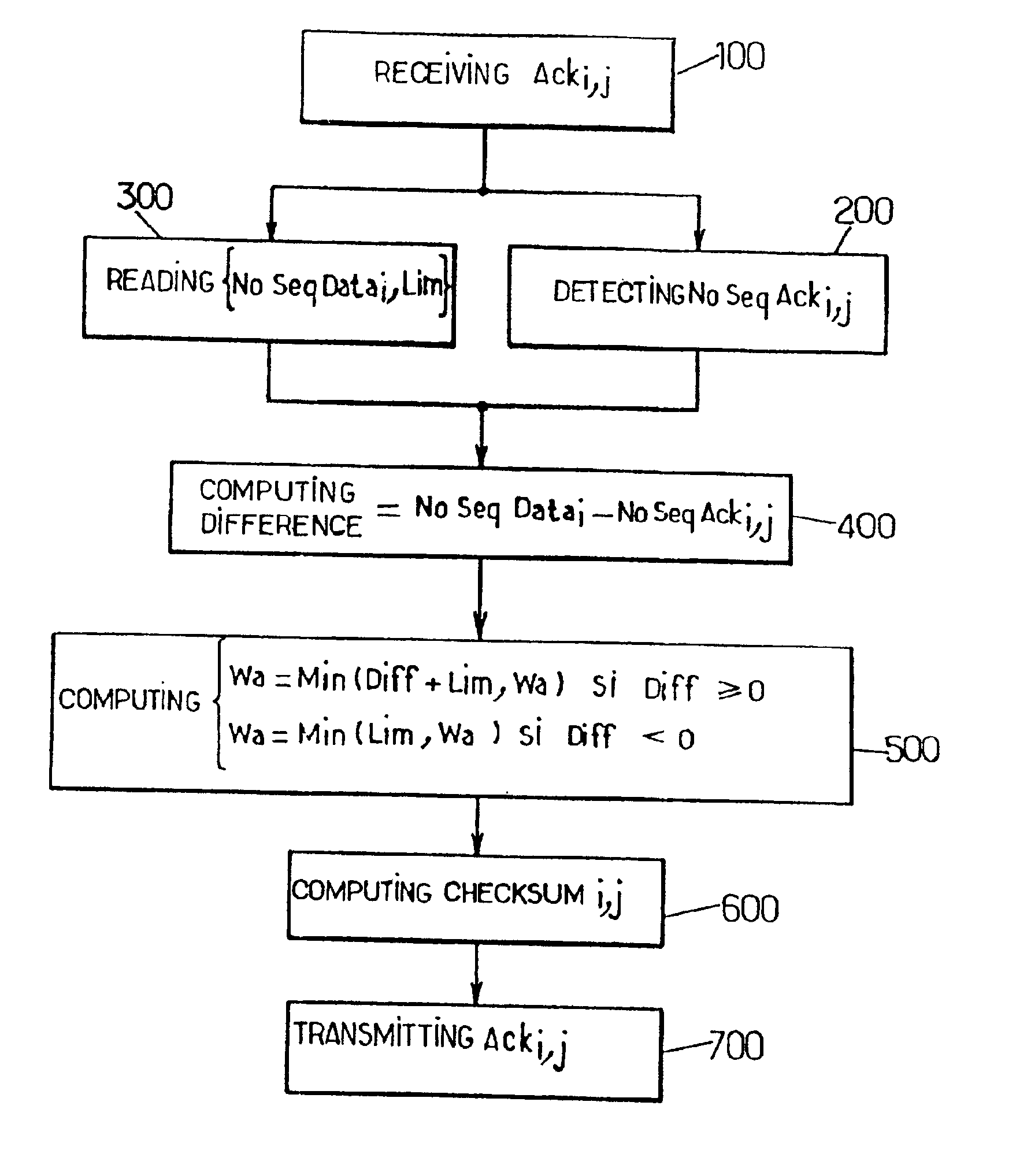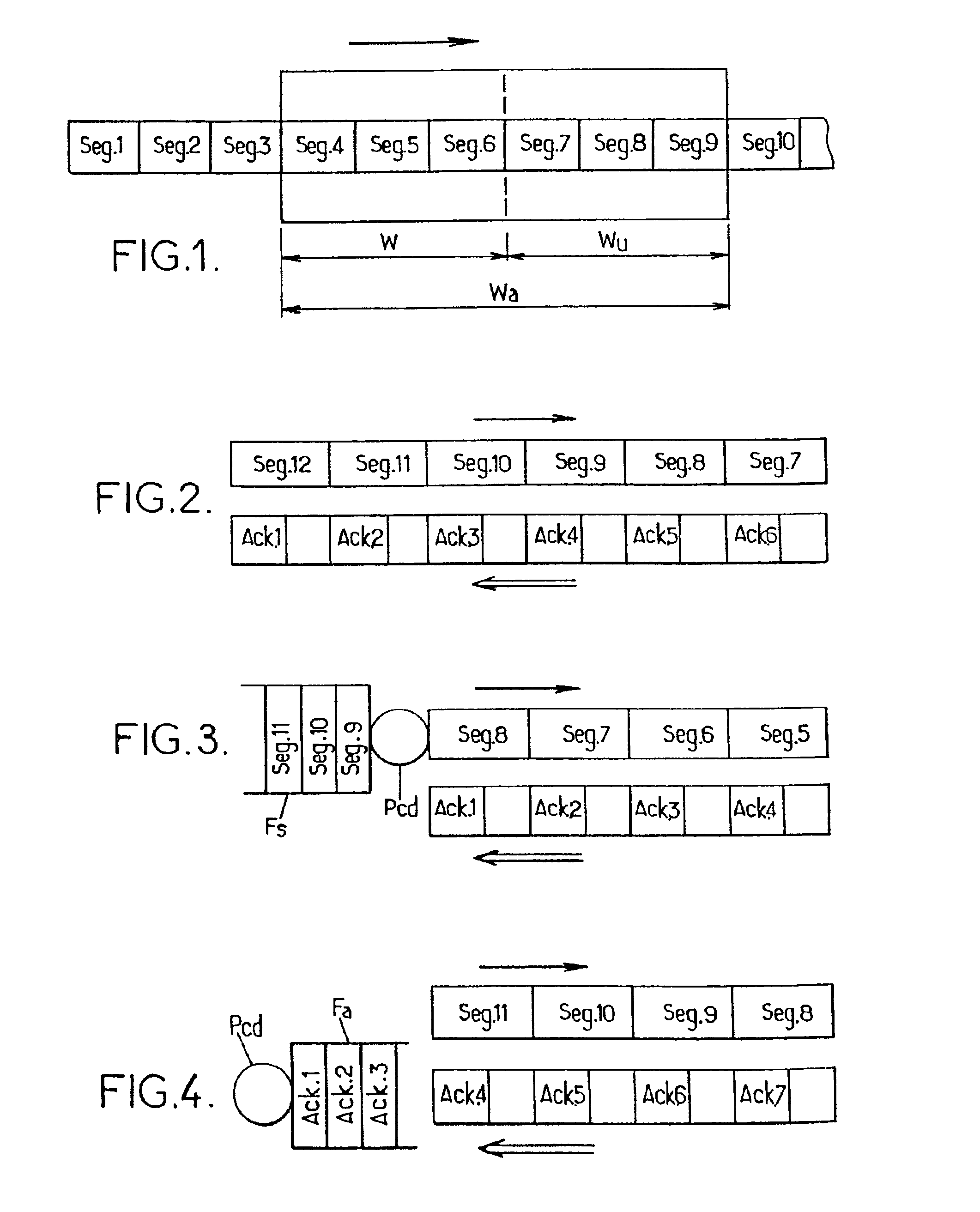Method and unit for controlling the flow of a TCP connection on a flow controlled network
a flow control and flow control technology, applied in data switching networks, frequency-division multiplexes, instruments, etc., can solve the problems of affecting the performance of the protocol, the different tcp connections are unfairly distributed, and the connection using a small size or being subjected to longer transmission times occupies the resources available in the network less quickly, so as to achieve the effect of convenient implementation
- Summary
- Abstract
- Description
- Claims
- Application Information
AI Technical Summary
Benefits of technology
Problems solved by technology
Method used
Image
Examples
Embodiment Construction
[0047]FIG. 5 schematically illustrates an example of a TCP link on a flow controlled network adapted to implementation of the method proposed by the invention. The example relates to an application programme being run on a computer 10 (hereafter sender) which has to transmit data to an application programme being run on a remote computer 20 (hereafter receiver). These two application programmes use the TCP protocol to communicate. The sender 10 is connected to a local network 50, for example a high speed Ethernet network. A network of this type does not generate congestion because of the high speed available relative to the volume of data which it transmits. The receiver 20 is also connected to a local network 60. In one example, the local area network 60 is also assumed to be an Ethernet network but, of course, it may also be a different network, of the LAN type (Local Area Network), for example.
[0048]The TCP connection is made on a flow controlled network 30, for example an ATM ne...
PUM
 Login to View More
Login to View More Abstract
Description
Claims
Application Information
 Login to View More
Login to View More - R&D
- Intellectual Property
- Life Sciences
- Materials
- Tech Scout
- Unparalleled Data Quality
- Higher Quality Content
- 60% Fewer Hallucinations
Browse by: Latest US Patents, China's latest patents, Technical Efficacy Thesaurus, Application Domain, Technology Topic, Popular Technical Reports.
© 2025 PatSnap. All rights reserved.Legal|Privacy policy|Modern Slavery Act Transparency Statement|Sitemap|About US| Contact US: help@patsnap.com



